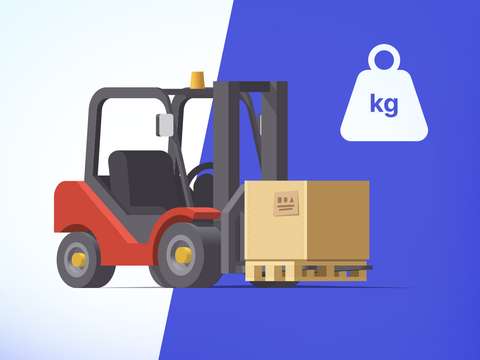If you're wondering how to prevent shipping damage, you've come to the right article.
A damaged product signifies more than just a financial setback. It results in unhappy customers, tarnished reputation, and escalated logistics expenses. Surprisingly, the expense of replacing a damaged product can be double the cost of repairing it. If left unchecked, this could significantly impact your profit margins.
As you can see, preventing package damage during shipping is crucial for maintaining business stability. Below, we'll outline the primary causes and effective strategies to mitigate shipping damage.

Physical damage is not the only factor affecting your shipping costs
While product damage is important, there are other issues beyond the physical condition that can profoundly affect the customer experience and, consequently, potentially trigger compensation claims. We are talking about misplacements, misrepresentations, wrong products, etc.
To achieve a truly profitable operation you mustlearn to minimise all types of shipping exceptions.
9 causes of shipping damage and strategies to reduce it
1. Inadequate packaging
The most common cause of product damage during shipment is that the packaging material was not strong enough. Poor quality packaging or packaging that is not suitable for the goods often results in damage of all kinds. In fact, many of the following causes can be mitigated by using higher quality packaging.
How to protect packages from damage during shipping?
- Choose the right box size, making sure it is slightly larger than the item
- Wrap each item, especially if it is fragile, in cushioning material
- Fill any empty space in the package with material to prevent damage from movement in shipment
- Conduct tests to assess package integrity and quality
2. Do not fill the empty space in the package
Not filling the empty space in the package is another common bad practice. When placing an item in a shipping box, some empty space is inevitable. These unoccupied areas can cause damage to the product during transport. The more the package is moved, the more likely it is to be damaged during shipping.
To prevent this, fill any remaining space with cushioning material, such as air bubbles, foam, or kraft paper. You should also secure the package with tape to prevent it from opening during transport.
Reduce the volumetric weight of your parcels
Carriers generally charge rates based on the dimensional weight of packages. The larger and heavier the box, the higher the shipping costs. Therefore, opting for smaller boxes not only mitigates product damage but also reduces the price of your shipments.
3. Stacking problems during loading
Stacking problems during loading, such as bumps, drops, or improper stacking, can damage goods during shipment. To ensure the integrity of your products, consider these tips:
- Ensure that the packaging can withstand the weight and protect the goods from potential packages that will be placed on top of them
- Label packages with instructions such as "fragile" or "top" so that carriers can handle them properly
- Choose a carrier with experience in the specific goods you are shipping (heavy cargo, temperature-controlled, etc.)
- If your own employees are in charge of loading the goods, be sure to provide them with proper training
4. Climatic conditions
Exposure to extreme temperatures, humidity, or rain can damage goods, especially sensitive products such as foodstuffs, medicines, or electronics. How to prevent damage to packages in these types of shipments:
- Use waterproof packaging that insulates from heat or cold
- Clearly indicate if the goods require special protection from the weather. This will help shippers take extra precautions
- Avoid shipping during periods of extreme weather whenever possible.
- Use climate-controlled couriers to ensure goods are kept in optimum condition.
- Perform weather resistance tests on your packaging before shipping the goods
5. Inadequate count of items to be shipped
Incorrect item counts often result in orders with mixed-up products, overweight items, and even lost or misplaced products, leading to partial or damaged deliveries.
This occurs when the product selection and verification process is done manually. One solution is to implement more efficient inventory control systems, such as barcode scanning or RFID (radio frequency identification), which allow for more accurate tracking of products.
6. Missed delivery deadline
Delivery delays generate dissatisfaction, increase returns, and worsen brand reputation. There are many reasons for this: logistical problems, congested shipping routes, planning errors, etc.
Establish efficient logistics management processes, such as picking lists or a transport pick-up automation system. Additionally, in case of delays, it is important to notify the customer so that they are aware that their product will take longer to arrive, minimizing their frustration. In this sense, delivery management software will help you ensure that shipments arrive at their destination within the contracted deadlines
7. Loss or theft
Loss or theft of goods during transport can result in significant financial loss as well as a negative customer experience. Implement security measures for all stages of the shipping process. In addition to shipping insurance, it is most effective to use order notifications to keep the buyer informed, providing an additional layer of protection.
8. Errors arising from mislabelling
A misplaced, illegible, or incorrect shipping label can result in the package being delivered to the wrong place or lost in transit. This is often the case when the information on the labels is manually filled in.
Here are some tips to prevent shipping damage from mislabeling:
- Place the shipping label in a clear and protected position
- Ensure that the shipping label is compatible with the format required by the courier service.
- Before printing in bulk, perform a test print to ensure that everything is correct
- Use a specialized shipping label printer
9. Deterioration due to storage conditions
Prior to shipment, products are often stored in warehouses or distribution centers where storage conditions may not be ideal. This includes extreme temperature changes, exposure to direct sunlight, or storage in areas with high humidity, all of which can cause damage to products before they are shipped.
In addition to analyzing the climatic conditions of your warehouse areas, we recommend that you implement an inventory rotation system to ensure that products are moved regularly and do not remain in storage for extended periods of time.
Recommend to read
Learn how to professionally manage your eCommerce shipments.
My shipment has been damaged, what do I do now?
One of the issues is the handling of damaged products: who is responsible for a damaged shipment, in which cases can we claim against the carrier, and how do we prove who caused the damage? Let's explore some.
1. Who is responsible for a damaged shipment?
The attribution of liability for a damaged shipment is primarily governed by the time at which the incident occurred. During transport, the carrier is liable for damage caused by negligence or mishandling. At the time of delivery, the carrier is liable until the package is received and signed for by the consignee. From that moment on, the responsibility passes to the consignee. If we are talking about the moment of loading or preparation of the order, the responsibility falls on the logistics provider: usually, it will be the eCommerce, the transport company, or a 3PL.
2. Review shipping damage policy
There are businesses that establish shipping damage policies with carriers. These are a set of rules and procedures established by a company or entity to address and handle situations where shipped goods are damaged. This policy clearly defines who is responsible for damage at different stages of the shipment, what actions both the shipper and the carrier must take in the event of damage, and how claims must be filed and processed.
3. Demonstrating accountability
In order to clearly establish liability, it is essential to retain all documentation related to the shipment, including the receipt, delivery note, and any photos of the damaged package. Additionally, it is crucial to contact the carrier to initiate an investigation and determine responsibility. If unsatisfied with the carrier's response, you may consider filing a formal complaint.
How to protect package from damage: Conclusion
The causes of product damage vary, ranging from inadequate packaging to environmental factors or careless handling. The reasons why they occur are not always clear, but their damaging impact on costs and profit margins is evident. Not only financial losses, but also reputational losses.
By understanding and addressing the most common causes and strategies, you are now better equipped to prevent damage to your parts and shipments in order to maintain a satisfied, profitable, and loyal customer base.




